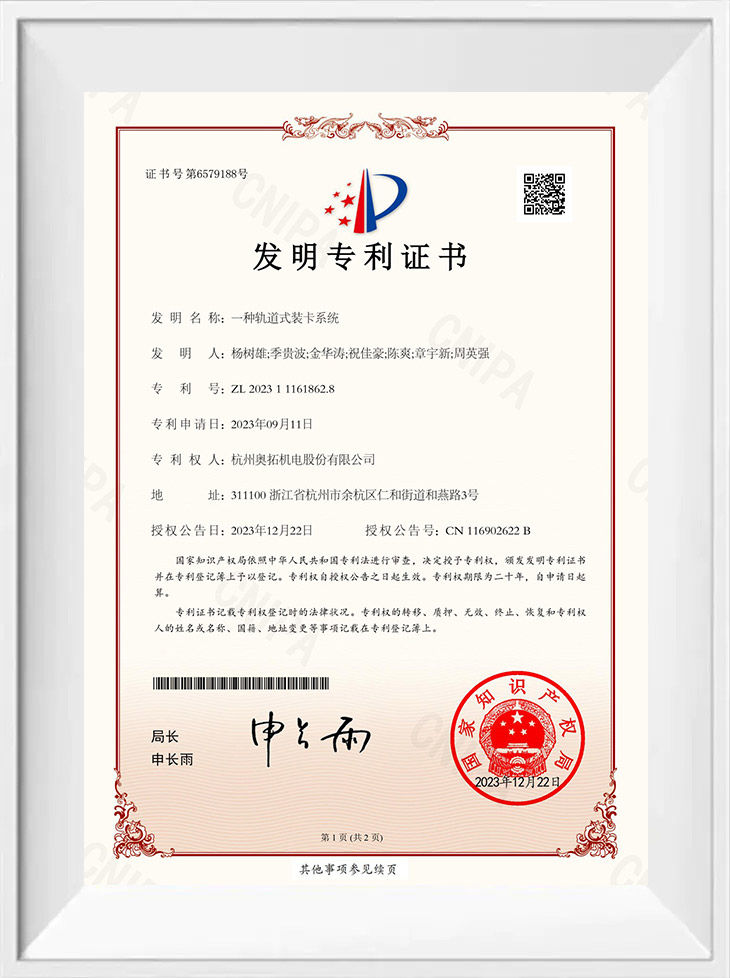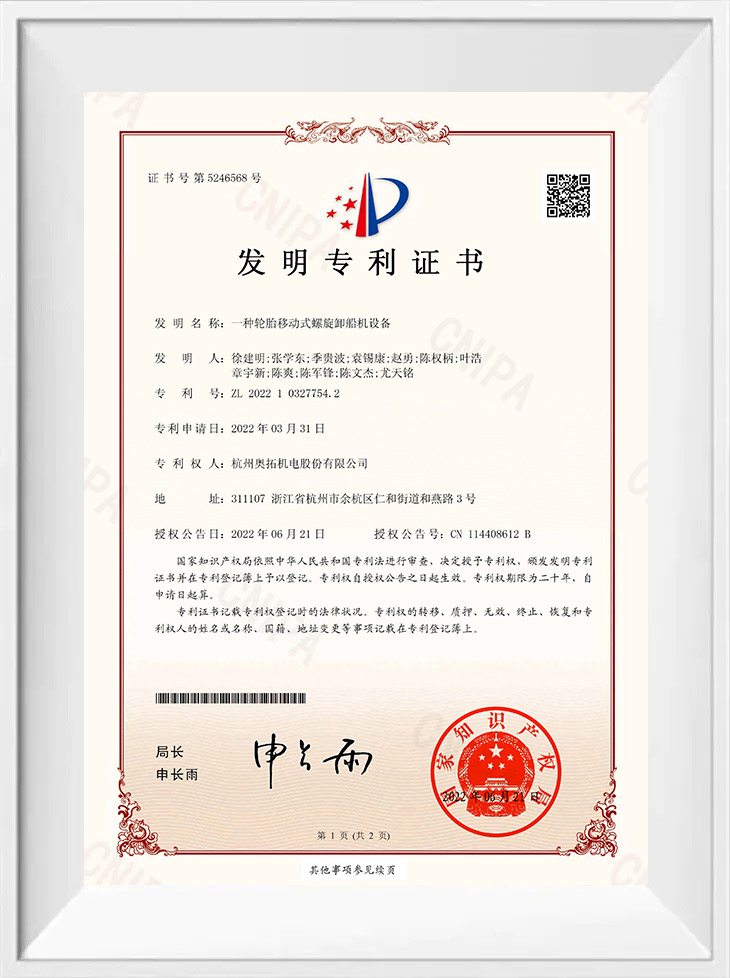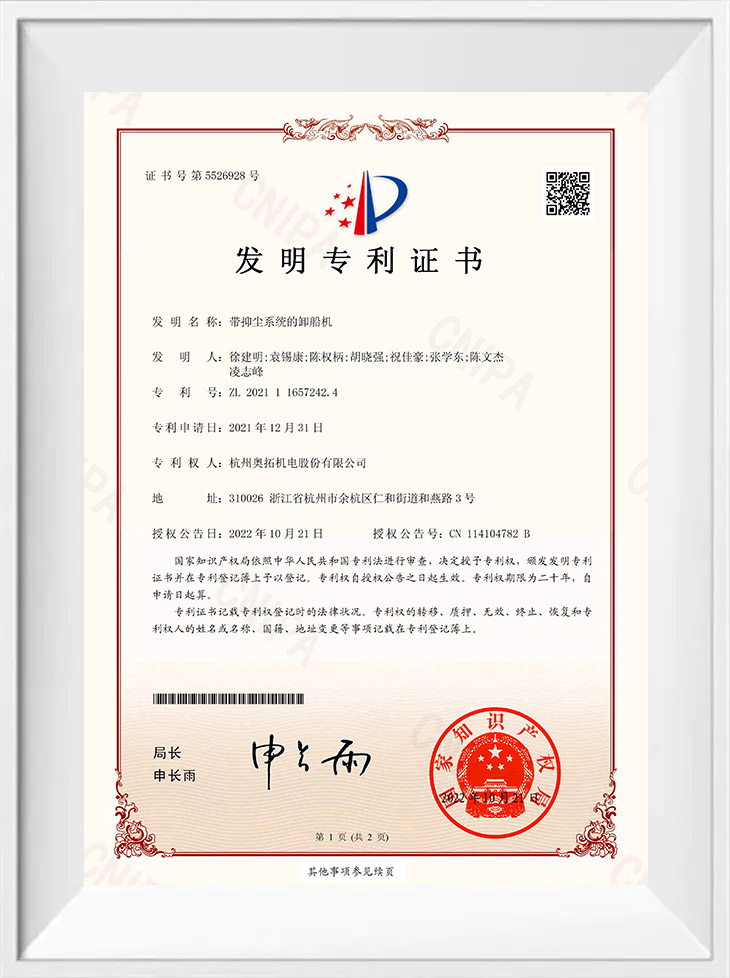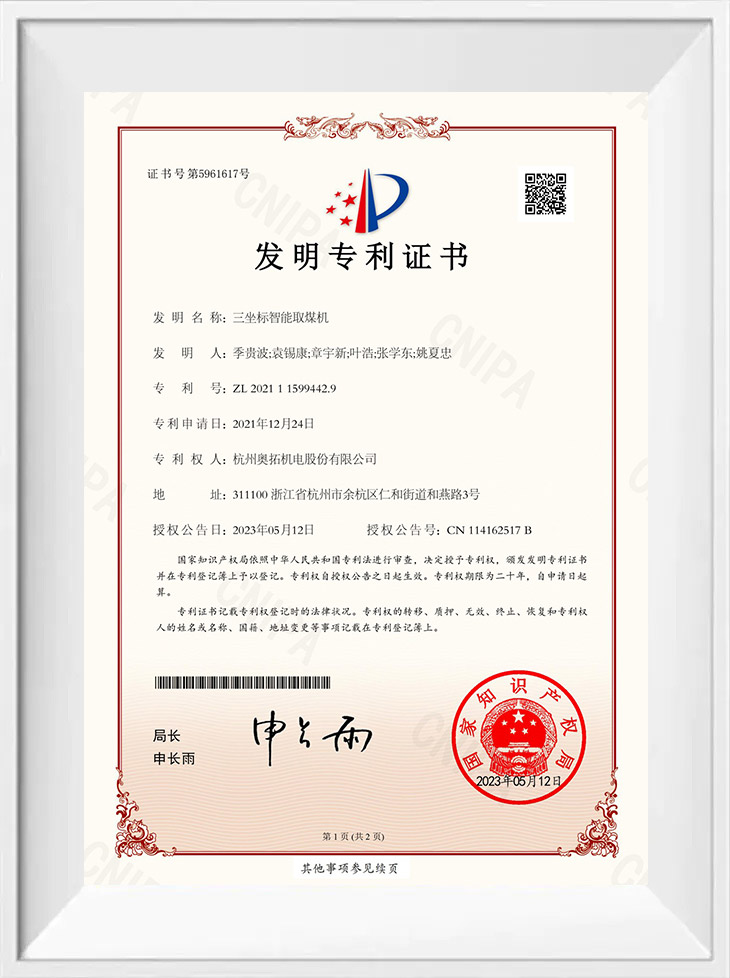-

Professionalism
-

Quality
-

One stop solution



News Center
News Updates
-
Admin 2025-12-19
Ensuring Efficient and Stable Operation of Ship Loader and Unloader Systems for Bulk Materials
Key Factors for Efficient Operation 1. Equipment Design and Structural Considerations Modern high-ca...Read More -
Admin 2025-12-12
Strategic Selection: Matching Ship Loader and Unloader Capacity to Port Operational Requirements
I. The Crucial Role of Bulk Material Handling Efficiency In the highly competitive dry bulk shipping...Read More -
Admin 2025-12-08
Aotuo Presents at Hangzhou Sand and Aggregates Supply Chain Innovation Exchange to Drive Industry Upgrading
Recently, the 2025 DongHai Forum—the Fifth China Sand and Aggregates High-Quality Development Summit...Read More -
Admin 2025-12-04
Maximizing Throughput: Precision Capacity Calculation for the Mobile ship unloader
Efficient port logistics depend on the reliable and rapid unloading of bulk cargoes. For the **Mobil...Read More -
Admin 2025-11-27
Operational Flexibility: Assessing Hatch Access and Clean-up Efficiency of Mobile ship unloader
For port operators and bulk material logistics companies, the true measure of a **Mobile ship unload...Read More -
Admin 2025-11-20
Environmental Compliance: Dust Suppression and Emission Control Features in Mobile ship unloader Systems
In the modern maritime industry, the operation of a **Mobile ship unloader** is scrutinized not only...Read More
Grain Ship Unloader Industry knowledge
What standards and specifications should be followed during the design and manufacturing of Grain Ship Unloader?
Grain Ship Unloader needs to follow a series of strict standards and specifications during the design and manufacturing process to ensure that its performance, safety, reliability and environmental protection meet international or domestic requirements. These standards and specifications mainly come from authoritative organizations such as the International Organization for Standardization (such as ISO), national standardization organizations and relevant industry associations. The following are some of the main standards and specifications that may need to be followed:
International Standards
ISO Standards: ISO (International Organization for Standardization) has developed a series of standards related to the design, manufacture and testing of machinery and equipment. For Grain Ship Unloader, ISO standards that may need to be referenced include but are not limited to:
ISO 21487: Design, manufacture and testing standards specific to screw unloaders or other types of ship unloaders. Although this standard number may directly point to screw unloaders, similar ISO standards may apply to grain ship unloaders.
ISO 7133: Standards that may involve machinery safety or specific machinery components may be instructive for certain components or systems of grain ship unloaders (such as transmission systems, control systems).
Other international standards: In addition to ISO, standards developed by other international standardization organizations (such as ASTM, DIN, etc.) may also be referenced. For example, standards such as DIN EN 620 may involve general requirements for mechanical design or specifications for specific components.
National/regional standards
Different countries and regions may have their own national standards or specifications, which are often based on international standards and revised or supplemented according to the actual conditions of their own countries. Therefore, the design and manufacture of Grain Ship Unloaders also need to follow the specific standards and specifications of the country or region where they are located.
Industry standards
In addition, the grain ship unloader industry may also have its own industry standards and specifications, which are usually formulated by industry associations or leading companies to improve the production level and technical standards of the entire industry. Following these industry standards can help companies improve the market competitiveness of their products.
Specific requirements
During the design and manufacturing process, the specific standards and specifications that Grain Ship Unloader needs to follow may include but are not limited to the following aspects:
Structural design: Ensure that the structure of the equipment is stable and reasonable and can withstand various forces and vibrations during the working process.
Safety assurance: Comply with mechanical safety standards, including protective devices, safety warnings, emergency stop devices, etc. to prevent accidents.
Performance indicators: meet the performance requirements of unloading efficiency, energy consumption, noise, etc., to ensure that the equipment can work efficiently and stably.
Service life: through reasonable material selection, process design and maintenance requirements, ensure that the equipment has a long service life.
Environmental protection: comply with environmental protection standards and regulatory requirements to reduce the impact on the environment.
How to customize the design of Grain Ship Unloader according to customer needs?
Customizing the design of Grain Ship Unloader according to customer needs is a complex but crucial process, which involves multiple considerations to ensure that the final product can meet the specific needs of customers. The following are the main steps and key points for customizing the design of Grain Ship Unloader according to customer needs:
1. Demand Analysis and Communication
Clear customer needs: Communicate in depth with customers to understand their specific needs such as grain types, loading capacity, unloading efficiency, working environment, safety requirements, budget range, etc.
Technical feasibility assessment: Based on customer needs, evaluate the feasibility of existing technologies and design solutions to determine whether the customer's customized requirements can be achieved.
2. Design Scheme Formulation
Structural design: According to the ship size, tonnage and grain characteristics, design a reasonable unloader structure, including screw conveyor, conveying pipeline, drive device, etc., to ensure that the equipment can work stably and efficiently.
Performance optimization: Adjust the performance parameters of the unloader according to customer needs, such as unloading speed, energy consumption, noise, etc., to achieve the best use effect.
Safety assurance: Design a complete safety assurance system, including protective devices, safety warnings, emergency stop devices, etc., to ensure the safety of operators.
3. Material and process selection
Material selection: According to the use environment and performance requirements of the equipment, select suitable materials, such as wear-resistant, corrosion-resistant, and high-strength metal materials to improve the durability and reliability of the equipment.
Process formulation: Determine the manufacturing process and process, including welding, processing, assembly, etc., to ensure quality control and efficiency in the manufacturing process.
4. Customized detail processing
Operation interface customization: According to the customer's operating habits and needs, design a humanized operation interface to improve the convenience and comfort of operation.
Convenient maintenance: Consider the daily maintenance and maintenance needs of the equipment, and design parts and structures that are easy to disassemble, clean and replace.
Environmental protection and energy saving: Pay attention to the environmental protection performance and energy-saving effect of the equipment, adopt a low-noise, low-energy consumption design scheme to reduce the impact on the environment.
5. Prototype testing and adjustment
Prototype production: Produce a prototype according to the design scheme, and conduct preliminary testing and debugging.
Performance testing: Conduct a comprehensive performance test on the prototype, including tests on unloading efficiency, energy consumption, noise, safety performance, etc.
Customer feedback: Invite customers to participate in the testing and evaluation of the prototype, collect their feedback, and make corresponding adjustments and optimizations as needed.

 EN
EN English
English 中文简体
中文简体 Français
Français
















